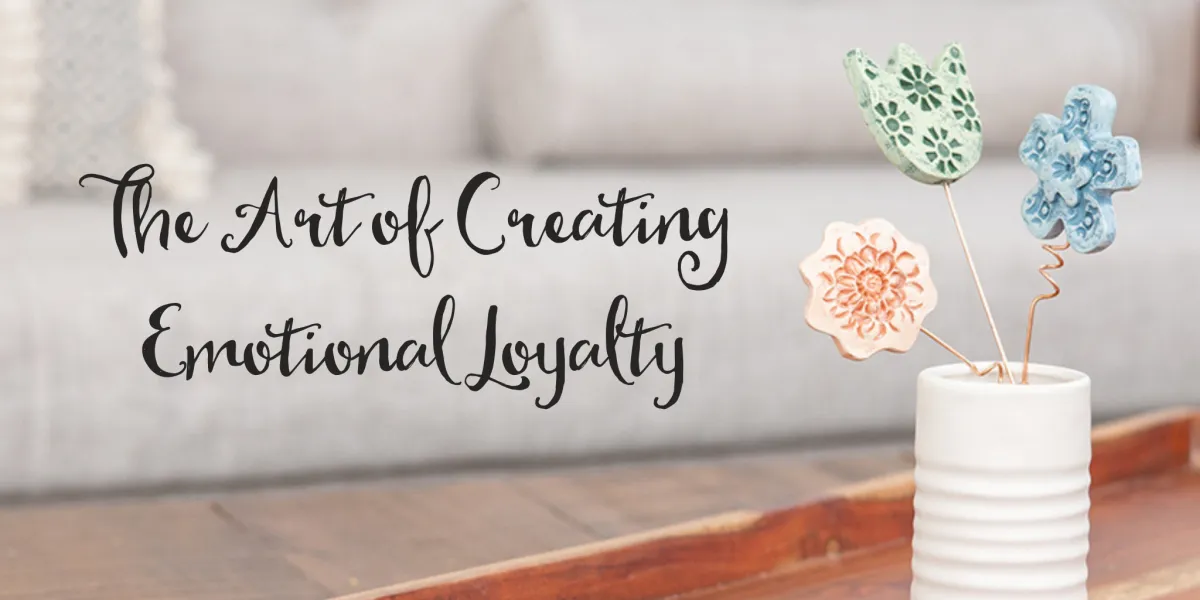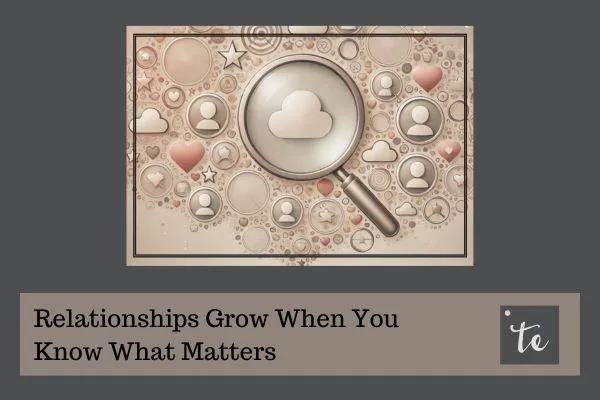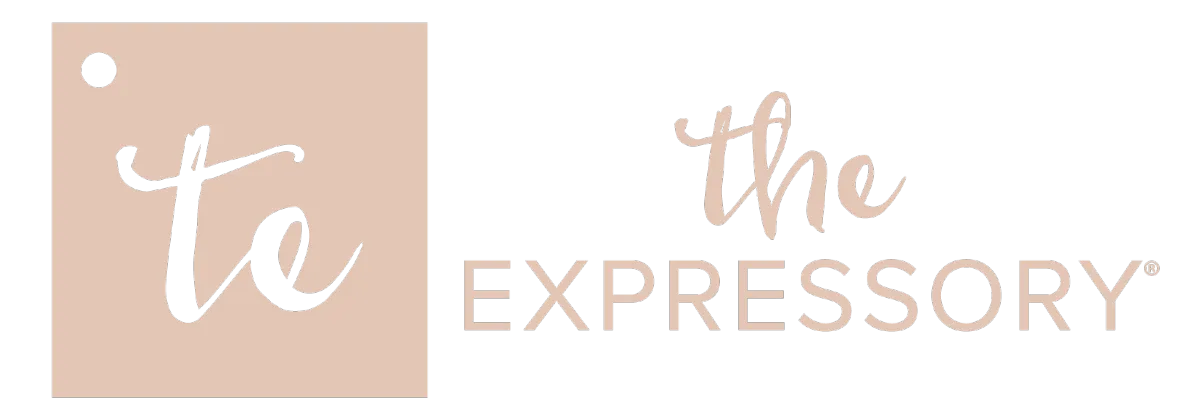
What Swimming Teaches Us About Team Relationships
In my latest video, I break down how swimming teaches us the importance of these relationship-building efforts and the specifics of what we as leaders need to nurture with our teams.
Holiday Gift Insights - What Everyone Else Is Doing
In an effort to simplify the decision-making process, we're sharing some of the trends we've seen with gifting over the years. We're even sharing our best seller and why that gift had such success.
What Makes A Successful Holiday Gift? The Travel Bag Edition
Last year we had the opportunity to work with one of our clients in the travel and tourism space to design an experience that delivered their highest engagement yet.

Relationships Grow When You Know What Matters
This isn’t a blog about decoding the magic formula of “successful relationships.” It’s not about trying to reverse-engineer why your best clients love you or why one employee stuck around longer than the others.
Instead, we’re talking about something a little more foundational, and honestly, a little more powerful.
We’re talking about recognizing patterns in what’s important to your strongest relationships so you can use similar insights to build relationships with others. Not by mimicking a moment that went well, but by truly understanding what goals or challenges they have.
Because the truth is people who understand what’s important to others tend to build more (and better) relationships. And that is what drives long-term growth in your business.
More often than not, this growth in revenue is significantly driven by increasing existing client spend. When you know what’s really happening in your client’s world, you’re better positioned to recognize opportunities before your competitors do. And before your client even realizes they need something. That’s not just relationship-building, it’s good business.
What Social Science Tells Us About Understanding
Social psychologist Harry T. Reis tells us that all great relationships share three things. The people in them feel understood, validated, and cared for. These aren’t feel good concepts, they’re actually hardwired into us.
When you make someone feel like you get them, you’ve just lowered every barrier they have up. And when they feel like you consistently show them understanding and care? That’s how trust, loyalty, and word-of-mouth referrals are born. Clients not only feel good enough about your relationship to tell others, but they also trust you enough to expand the scope of what they rely on you for. That trust often translates to new services, deeper partnerships, and a bigger piece of their business.
But understanding what matters to someone in your professional world isn’t always easy. Especially when you’re juggling dozens (or hundreds) of relationships at a time.
That’s where your research comes in. And these days, AI can help with that part.
Gather What You Know to Get Started
Every good engagement strategy starts with research. But not research for research’s sake. We’re not building FBI files here. We’re just looking for what matters to the people you want to build stronger relationships with.
Here’s what that might include:
Notes from conversations
Fun facts from social media posts or profiles
Insights from blog content, interviews, or newsletters
Their website
You’re listening for clues. What are their values, pain points, personality traits, lifestyle tidbits, or goals? Sometimes the best insights come from the things they say when they’re not trying to “say the right thing.”
Use AI to Surface the Themes
The analysis we’re going to share assumes you’ve done the research on a number of your key connections.
Now comes the fun part.
Use AI (like ChatGPT) to help you spot the common threads faster. Drop in your research documents, or copy lists of data points, and ask questions like:
“What keywords or emotional themes show up across these entries?”
“Are there recurring goals or interests mentioned?”
“Which pain points or challenges are most commonly expressed?”
“Give me one unique theme or keyword per company.” – You would use this type of prompt if you want to have a very personalized theme to work with per contact or company.
Note – You will also want to ask the tool to cite why it noted this theme. Tell it to give you the exact companies who referenced this theme. This way you can validate that the content really appeared in multiple places in your research. As you know, sometimes you have to work hard to get good information out of AI!
AI can help you detect things you may have missed because you’re just too close to it. Or too busy.
Once the tools starts showing you the keywords and phrases that are common for a lot of your contacts, you’ll probably start to realize some are pretty obvious. But most of the time we just don’t have much of a need to be aware of these things.
Maybe 60% of your best clients are really focused on work-life balance.
Maybe half of your prospects express concern over decision fatigue.
Maybe your referral partners are all people who geek out over strategy.
The reason we’re putting together this list is so that you can begin to think about how you can make use of that knowledge to show these people that you understand and want to be helpful related to that subject. But the first step is to simply parse out the information.
Where Opportunity Hides
Here’s the thing most professionals miss: knowing what matters to your clients doesn’t just help you retain that client, it can help you grow with them.
We've seen it firsthand. Companies will miss out on major client work, not because they weren’t capable, but because the client didn’t realize they offered it. Why? The relationship hadn’t grown deep enough to surface that opportunity.
These are the moments when insight leads to income. When you know what’s happening in a client’s world, personally or professionally, you’re more likely to catch that passing comment about an upcoming move, a new hire, or a business shift. And that’s your opening to provide value before someone else does.
Build a Theme Map
To make your engagement planning easier, you’ll want to organize these insights into a themes map. This will give you a single place to document your ideas for later designing touchpoints. It can be as simple as a spreadsheet. Columns can include:
Industry
Specific Client/Company – a place to note if the theme was specific to just one company or contact.
Theme
Based On (a note, link, or snippet from your research that helps you remember why the theme was raised) This is going to come from where you asked the tool to cite why it used that theme.
Ideas for touchpoints
This becomes your playbook for thoughtful outreach. It’s not just notes, it becomes empathy in action.
Understanding Builds Momentum
Your strongest relationships probably didn’t start strong. They became that way because, over time, you demonstrated that you understand them. That you noticed what matters. That you remembered things others forgot.
By using AI to help identify the common threads across those relationships/industries, you now have a shortcut to being that person for larger groups of people at once. You can start relationships already speaking their language.
Our suggestion is to take three of the newly identified themes and design touchpoints that will be helpful and relevant to your clients’ growth. Show them you understand an important trend or challenge in their industry (or in their personal life if you’re dealing with end consumers) and offer a resource or insight that could help. This positions you as more than a vendor, you’re a proactive partner. And that kind of engagement often leads to increased spend, loyalty, and referrals.
The more consistently you make people feel understood, the more loyalty you create. Because humans are simple like that. We gravitate toward people who make us feel seen.
You Don’t Have to Be a Mind Reader
You just have to be a good noticer.
And now, you’ve got tech that can help you notice better.
Reflect and Rebuild: 5 Questions to Guide Your Use of Themes
You’ve now got the tools to uncover the themes that matter most to your people. Whether it’s clients, prospects, or partners—recognizing what resonates across your strongest relationships can help you create more of them.
Here are five questions to guide your next steps:
Have I spotted consistent themes among my best relationships?
Think values, pain points, goals, or even hobbies. What’s showing up again and again that might help you connect more easily with others in similar roles or industries?Do I have a system for organizing these themes in a way that’s actually useful?
Your research is only as good as your ability to reference it later. Can you quickly pull up the themes that matter to your top clients? Or to everyone in a certain vertical?Which themes do I understand well enough to engage with meaningfully?
It’s one thing to know someone values work-life balance. It’s another to send them something that helps them achieve it. Where can you authentically engage?Am I regularly using those themes to guide my touchpoints?
Are your notes turning into action? Use themes to guide what you say, what you send, and how you show up—so your outreach never feels random.What’s one new theme I’ve discovered that I want to explore more deeply?
Not every theme needs to become a campaign. But if something new pops up repeatedly—like a shift in values or an emerging concern—it’s worth noting and experimenting with in your next round of engagement.
Themes help you show people you understand what matters. And the more consistently you do that, the more powerful your relationships become.
Need a hand building your theme map or figuring out how to turn insights into outreach? We’re always happy to brainstorm with you. We don’t just help you notice what matters. We help you act on it with tools, ideas, and done-for-you solutions that deepen connections and uncover hidden opportunities Drop by an upcoming Q&A or schedule a time to talk. We’re here to help you notice better.
Address:
1500 S. Sylvania Ave #106
Sturtevant WI 53177
Phone:
414.243.8971

